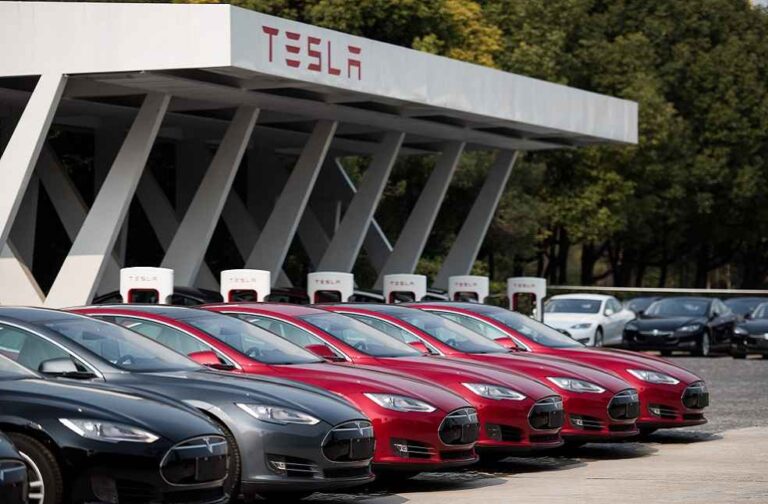Previously, Tesla’s remarkable profit margins set it apart from rivals, serving as proof for its bull investors of the company’s unmatched potential in the EV sector. This bolstered Tesla’s stock to an astonishing $1 trillion valuation.
Yet, 2023 sketches a divergent narrative. This year witnessed Tesla’s profit margins take a sharp descent, falling beneath the company’s benchmark. The primary trigger is significant price deductions initiated early in the year, which, despite pressuring profit margins, drove deliveries to record levels.
To sustain sales velocity, Tesla found it necessary to continually adjust prices downward. This decision surfaces against the backdrop of escalating competition from emerging EV brands like Nio (NIO), XPeng (XPEV), Rivian (RIVN), Lucid (LCID), and seasoned player, BYD (BYDDF). Giants of the traditional automotive world, General Motors (GM), Ford Motor (F), and Volkswagen (VWAGY), have also staked their claim in the electric race. With the shadows of the Covid-related supply interruptions receding, vehicle production surges across the industry, leading to increased pricing tensions.
Despite the current challenges, some analysts remain steadfast in their belief that Tesla’s profit margins will soon find their upward trajectory, anticipating this ascent to commence in 2024. Such a revival could rekindle Tesla’s earnings dynamism and solidify its mega-growth stature in the stock world. Contrarily, if these projections falter, Tesla might find itself rebranded as another mainstream automaker with moderate profit boundaries and less elevated market estimation.
Wedbush analyst Dan Ives posits that the steepest price reductions might already be past Tesla.”Even though margins have been hit, I think it’s going to be a key part of their success over the coming years that they made these moves now” articulated Ives.
Potential catalysts like the pending Tesla Cybertruck production could be transformative for profit margins. Analysts also highlight other margin enhancers like the upgraded Model 3, Supercharger revenue, and the Full Self-Driving feature.
Elon Musk, Tesla’s CEO, brushes off fleeting concerns about profit margin shifts, emphasizing that the real game-changer will materialize with the advent of complete autonomous driving, a development that, according to him, will substantially augment Tesla’s vehicle value.
The price oscillations indeed presented investors with a thrilling journey. Tesla’s stock took a significant hit during 2022’s bear phase but rebounded post the initial price deductions of January. While the stock witnessed a twofold increase in 2023, the recurrent price recalibrations have caused the stock’s performance to be somewhat erratic.
Reflecting on Tesla’s past fiscal performance, the auto gross profit margins, devoid of regulatory credits, touched a zenith of 30% in Q4 2021. A pivotal reason is that Global supply disruptions impeded several automotive players, leaving Tesla and a select few, like BYD, to seize the opportunity by enhancing output.
2022 saw Tesla’s production benefiting from its newly minted Berlin and Austin, Texas plants. Yet, by the time the year was drawing to a close, stress indicators emerged. Tesla resorted to aggressive price reductions in China and lucrative discounts in the U.S. to keep up with demand.
By January 2023, Tesla rolled out another sequence of price recalibrations, with certain U.S. models experiencing price reductions of up to 28%. Despite these reductions, Tesla’s deliveries maintained an upward trajectory, emphasizing the brand’s enduring allure.
As Tesla grapples with these multifaceted challenges, the global EV arena observes intently, keenly awaiting signs of the titan’s resurgence to towering profit margins.
EV WORLD | AVL Conjoins with Henkel for EV Battery Advancements in Düsseldorf





